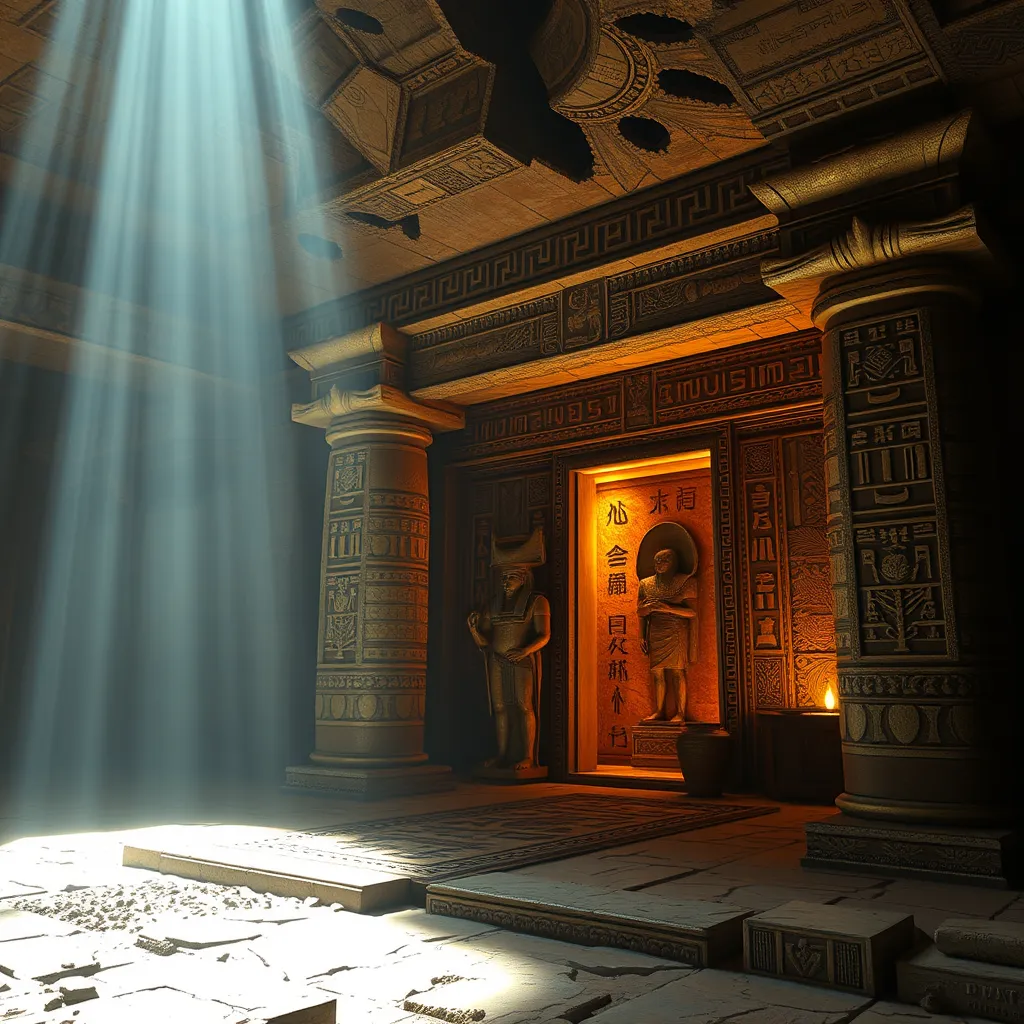Unlocking the Secrets of the Duat: A Journey Through the Egyptian Underworld
I. Introduction to the Duat
The Duat, often referred to as the Egyptian underworld, holds a central place in ancient Egyptian belief systems. It is not merely a location but a complex realm that embodies the concept of the afterlife, where the souls of the deceased embark on a perilous journey.
In ancient Egyptian cosmology, the Duat represents the transition from life to death, serving as a space where the soul undergoes trials to gain entry into the eternal realm of the gods. This article aims to explore the various facets of the Duat, uncovering its mysteries and understanding its significance in ancient Egyptian culture.
II. Historical Context of the Duat
The beliefs surrounding the afterlife in ancient Egypt evolved over millennia, reflecting changes in religious practices and societal values. Initially, the afterlife was viewed as a continuation of earthly existence, but as time progressed, more elaborate concepts developed.
- Key Texts: Significant texts such as the “Book of the Dead” and the “Pyramid Texts” provide detailed accounts of the afterlife and the role of the Duat.
- Cosmology: The Duat is intricately linked with Egyptian cosmology, often depicted as a complex system of rivers, fields, and realms that the deceased must navigate.
III. The Geography of the Duat
The Duat is not a singular location but a vast, layered landscape filled with diverse features. It is often illustrated as a dark, watery expanse contrasted with regions of light.
Key features of the Duat include:
- The Waters of Chaos: Representing the primordial state of existence, these waters are both a barrier and a pathway for the souls.
- The Field of Reeds: A paradise where souls could enjoy eternal peace, akin to the Egyptian view of the ideal afterlife.
Water, darkness, and light symbolize the duality of life and death, serving as powerful motifs throughout the journey of the soul.
IV. Deities and Entities of the Duat
The Duat is populated by a myriad of deities and entities, each playing a unique role in the journey of the soul.
- Anubis: The god of mummification and the protector of graves, Anubis guides souls through the Duat.
- Osiris: As the god of the afterlife, Osiris judges the souls of the deceased, determining their fate.
- Ra: The sun god, who travels through the Duat during the night, symbolizing rebirth and renewal.
In addition to these major figures, numerous lesser-known spirits assist in various aspects of the journey, ensuring that the deceased navigate the challenges they face.
V. The Journey of the Soul
The journey through the Duat is a multifaceted process that represents the soul’s transformation after death. It involves several stages:
- Preparation: Funerary rituals are essential, including mummification and burial practices that help the soul transition.
- Weighing of the Heart: A critical moment where the deceased’s heart is weighed against the feather of Ma’at, symbolizing truth and justice.
- Trials and Challenges: The soul faces various obstacles, including monstrous beings and treacherous landscapes, testing its worthiness.
Successful navigation through these trials leads to the ultimate reward: eternal life in the presence of the gods.
VI. Symbolism and Art in Depictions of the Duat
The Duat’s representation in ancient art is rich with symbolism, found in tomb paintings and papyrus illustrations that depict the journey of the soul.
- Tomb Paintings: These artworks often illustrate scenes of the deceased interacting with gods, showcasing the belief in an active afterlife.
- Common Symbols: The ankh (symbol of life), the scarab (rebirth), and the feather of Ma’at are prevalent in Duat-related art, each carrying deep meanings.
Mythology heavily influenced these artistic representations, as stories of gods and the afterlife were intertwined with cultural expressions.
VII. Modern Interpretations and Discoveries
Recent archaeological discoveries have shed light on the Duat, enhancing our understanding of ancient Egyptian spirituality.
- Archaeological Findings: Tombs, artifacts, and inscriptions provide insights into the rituals and beliefs surrounding the Duat.
- Contemporary Understanding: The Duat continues to fascinate modern scholars, influencing literature, art, and even popular culture.
- Comparative Analysis: The concept of the Duat can be compared to other cultures’ afterlife beliefs, revealing universal themes in humanity’s quest to understand death.
VIII. Conclusion: The Enduring Legacy of the Duat
The Duat remains a profound symbol of ancient Egyptian beliefs about death and the afterlife. Its intricate mythology and the rich tapestry of deities and challenges faced by souls offer invaluable insights into the culture and spirituality of ancient Egypt.
As we reflect on the significance of the Duat, we see its influence in modern culture, from literature to film, illustrating humanity’s enduring fascination with the mysteries of the afterlife. The secrets of the Duat continue to captivate researchers and enthusiasts alike, reminding us of the complexities of life, death, and what may lie beyond.




